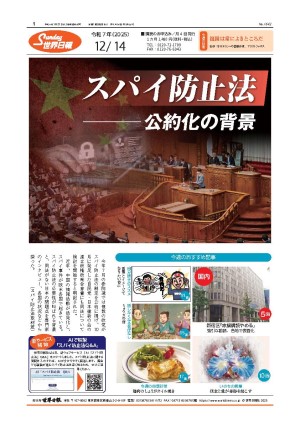オバマ任命判事には「平和の十字架」の大きさが問題 Size matters, to these judges
国の歴史を消去するキャンペーンが続いている。単なるばかげた連中に代わって、間抜けらが登場して、暴虐が相次いでいる。フィラデルフィアにある米国第4巡回控訴裁判所の3人制の判事団は、知恵を尽くして、第2次世界大戦の戦死者の慰霊のために92年前に建立された40フィートの「平和の十字架」は「違憲だ」と判決を下した。
それは公費で維持されているので、その記念碑は「宗教を支持するのに最大の効果を持っており、十字架はキリスト教の核心的象徴なので、過度に政府を宗教に巻き込んでいる。だから、教会と国家を分けている壁を壊しているのだ」と判事団は言った。従って、(政教分離原則・信教・表現の自由条項)憲法修正第1条に反していると言うのだ。
その大理石とコンクリートでできた十字架は、1925年に建てられ、メリーランド州のブラーデンスバーグの大きな交差点にある。資金は米国在郷軍人会や一般市民から出されており、そして、今は「メリーランド首都公園計画委員会」によって維持されている。これは、州の機関であって、そこが1961年に米国在郷軍人会からそれを取得したのである。「平和の十字架」は特に「戦争を終わらせる戦争」で亡くなったプリンスジョージズ郡出身の49人の兵士を記念している。
判決理由を書いたステファニー・D ・サッカーとジェームズ・A・ワイン判事らは、両者とも、オバマ大統領によって彼の選挙戦を強化するために控訴裁判所に任命されたのであったが、2008年に「米国を土台から変容させる」という言葉を使っている。
サッカー判事は、彼女の判決理由の中で「ブラーデンスバーグ平和のための十字架」を公有地から移動させるべしとの命令は、ほかの宗教性を持った戦争の記念碑、アーリントン国立墓地や、国中にある国立墓地を飾っている何千もの十字架をさえ脅かし得る「危険な先例」になるという主張をはねつけた。
「そういう所にある十字架はここで問題になっている40フィートのモノリス(一枚岩的なもの)よりずっと小さい」と彼女は書いた。サイズも確かに問題なのだというのが彼女の考えだった。
十字架の礎石には「武勇、忍耐、勇気、献身」という言葉が、同州の故人49人の名前を列挙し、さらに、第1次世界大戦中の大統領、ウッドロー・ウィルソンの言葉や、米国在郷軍人会のエンブレムなどが描かれているブロンズのタブレットと共に刻まれている。
その判決は全然予期されていなかったわけではない。2人の判事は昨年12月7日の法廷での口頭弁論で、憲法上の問題は、記念碑を個人財産に移動させるか、十字架の両腕を切断するかということで議論の余地があるとほのめかしていたからだ。切断論は最初に、原告であるアメリカ人道主義協会(AHA)によって提案された。そこは、両腕を取り除けば「宗教性のない厚板あるいはオベリスク(方尖塔〈ほうせんとう〉)の形になる」と言っているのである。
仲間と意見を異にする主席判事のロジャー・L・グレゴリーは憲法修正第1条は「政府に“社会生活から”いかなる宗教的言及も“消去するよう”求めてはいない」と書いた。彼は、兵役経験者らを追悼する記念碑が「これらの英雄が守るために死んだまさにその憲法の文言や精神を侵害するという考えに同意できない」と言った。グレゴリー判事は、クリントン大統領に、その1期目終了時に判事に任命されたが、グレゴリーの最初の指名は、クリントン氏の2期目と共に終了。そして、ジョージ・W・ブッシュ大統領よって、再度任命されたのであった。
米国在郷軍人会の代わりに十字架を守っているファースト・リバティ研究所のケリー・シャックルフォードは、判決は米国最高裁判所に控訴されるだろうと言った。「私たちはここで止まっているつもりはない」「もしも、こういうのが法律ならば、ほかのあらゆることが危険にさらされている」と言った。
控訴も重要である。「死力を尽くして献身した」49人の兵士を追悼することが依然として成すべき価値あることであるならば。
(10月23日付)
The campaign to erase the nation’s history continues, outrage following outrage, the goofy replacing the merely ridiculous. A three-judge panel of the 4th U.S. Circuit Court of Appeals, which sits in Richmond, in its wisdom has ruled that a 40-foot Peace Cross erected 92 years ago to honor the military dead of World War I is “unconstitutional.”
Because it is maintained with public funds, the panel said, the monument “has the primary effect of endorsing religion and excessively entangles the government in religion because the cross is the core symbol of Christianity, and breaches the wall separating church and state,” and thus violates the First Amendment.
The marble-and-concrete cross was erected in 1925, located at a major intersection in Bladensburg, Md., with funds from the American Legion and the public, and is now maintained by the Maryland-National Capital Park and Planning Commission, a state agency, which acquired it from the American Legion in 1961. The Peace Cross specifically commemorates 49 soldiers from Prince George’s County who died in “the war to end wars.”
Judges Stephanie D. Thacker, who wrote the opinion, and Judge James A. Wynn, were both appointed to the appeals court by President Obama in furtherance of his campaign, described in 2008, of “fundamentally transforming the United States of America.”
In her opinion, Judge Thacker rejected the argument that ordering the Bladensburg Peace Cross removed from public land would set a “dangerous precedent” that could threaten other war memorials of a religious nature, even the thousands of crosses that adorn the graves of America’s war dead at Arlington National Cemetery and other national cemeteries across the nation.
“The crosses there are much smaller than the 40-foot-tall monolith at issue here,” she wrote. Size does, too, matter, she held.
At the base of the cross are the words “Valor, endurance, courage, devotion,” with a bronze tablet listing the names of the slain 49 men of the county, along with a quotation from Woodrow Wilson, the president during World War I, and emblems of the American Legion.
The ruling was not entirely unexpected. The two judges suggested during oral arguments before the court last Dec. 7 that the constitutional question could be mooted by moving the monument to private property, or by amputating the arms of the cross. Amputation was first suggested by the American Humanist Association, the plaintiff, which said removing the arms would “form a nonreligious slab or obelisk.”
Dissenting from his colleagues, Chief Judge Roger L. Gregory wrote that the First Amendment “does not require the government ‘to purge from the public sphere’ any reference to religion.” He could not agree, he said, that a monument honoring veterans “violates the letter or spirit of the very Constitution these heroes died to defend.” Judge Gregory was nominated to the court by President Clinton at the end of his term his term and renominated by President George W. Bush after the first nomination expired with Mr. Clinton’s second term.
Defending the cross on behalf the American Legion, the First Liberty Institute’s Kelly Shackelford said the decision would be appealed to the U.S. Supreme Court. “We’re not going to stop here,” he said. “If this is the law, everything else is in danger.”
An appeal matters, too, if honoring the 49 soldiers of the county who gave their “last full measure of devotion” is still a worthwhile thing to do.
October 23, 2017





